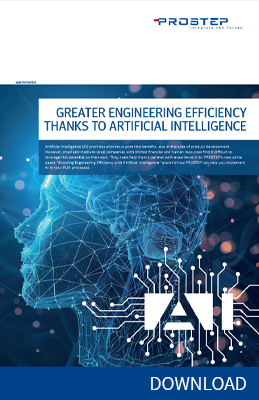 PROSTEP is an active member of the blockchain committee, and it was not the first time that it had presented a use case. At one of the committee's first meetings, Dr. Martin Holland, Head of Strategy & Business Development at PROSTEP, presented a blockchain-based solution for the forgery-proof exchange of 3D printing and process data and the unequivocal identification of the printed components. It was originally developed as part of the collaborative SAMPL project. Blockchain technology is now an integral part of PROSTEP's data exchange solution OpenDXM GlobalX, thus making it available to a wider range of users.
PROSTEP is an active member of the blockchain committee, and it was not the first time that it had presented a use case. At one of the committee's first meetings, Dr. Martin Holland, Head of Strategy & Business Development at PROSTEP, presented a blockchain-based solution for the forgery-proof exchange of 3D printing and process data and the unequivocal identification of the printed components. It was originally developed as part of the collaborative SAMPL project. Blockchain technology is now an integral part of PROSTEP's data exchange solution OpenDXM GlobalX, thus making it available to a wider range of users.
"We are seeing an increasing number of interesting blockchain applications that go beyond the mere payment processing function. In addition to automating business processes via smart contracts, the technology also offers great potential, particularly in the context of the unalterable documentation of transactions that can be used as evidence in court," says Holland. At the panel's last meeting, he presented another practice-oriented example: The solution, which was created in Holland, makes it possible to store the history describing the creation of complex CAD models in the blockchain and thus provide full proof of the authorship of the data. This is particularly interesting for collaborative open innovation scenarios in which multiple engineers work simultaneously on a new development.
"Members of VDMA, including PROSTEP, have developed a number of applications that are really exciting," says Kai Kalusa, head of Digital Public Affairs at VDMA. "We are currently discussing presenting these applications to a wider audience as part of a larger event in order to give our member companies a better understanding of the blockchain technology."
